Great gardens usually require more than just plants. Take a stroll through your local botanical garden and you will soon notice the pathways, raised garden beds, pergolas, arbours, gazebos, steps, bridges and a myriad of other structures that give the garden its framework.
Now consider what landscaping tools were used to create this garden architecture and it’s obvious that the typical garden shed probably doesn’t hold most of what you need.
In fact, there are probably a heap of specialty tools that may need to be sourced elsewhere. But, for most home gardens, and the gardeners who create them, there are only 21 essential tools that you need.
More...
21 Essential Landscaping Tools
Design Tools
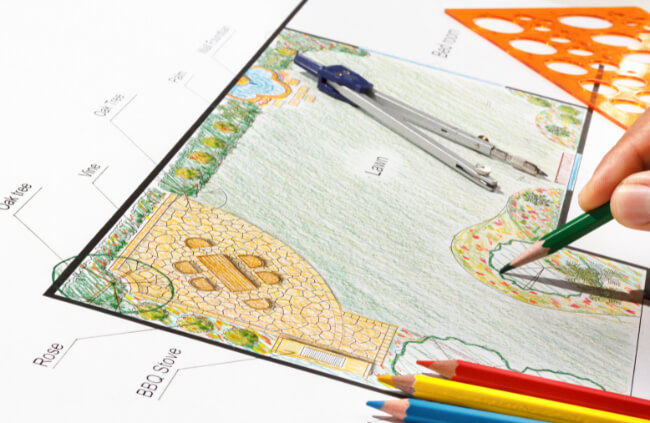
Site Map Drawing
Obvious – but worth mentioning. Without a plan, no matter how sketchy it is, your garden is likely to become a menagerie of ideas and structures that may not work together all that well. It’s always best to start with a plan that, at the very least, outlines the main structures and offers some congruence to the landscape.
Demolition Tools
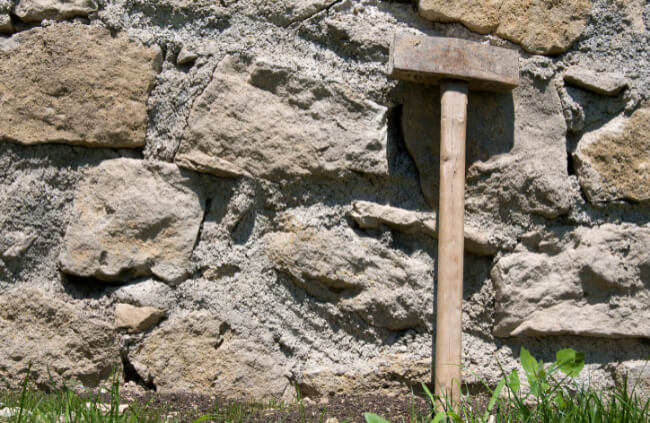
If you’re starting your garden from scratch, then these demolition tools may not be needed for a while. However, if you’ve inherited a garden with a plethora of landscaping sins, or some structures are just in the wrong place then these will come in very handy.
Sledge hammer
Usually weighing between 4.5-9 kg, these tools are not lightweight and definitely need some strength behind them. If you’re not up to it maybe you could hire a bodybuilder or weightlifter for an afternoon. Great for demolishing walls and anything that’s been bound by concrete or mortar.
Check out our in-depth guide for choosing the best sledge hammer for your needs.
Crowbar
A crowbar, or colloquially known as a jimmy bar, is great for levering rocks or bricks and even large slabs of word. They can even be used to dismantle most wood structures, plying timbers apart and removing nails. Hopefully not yours!
Measuring Tools
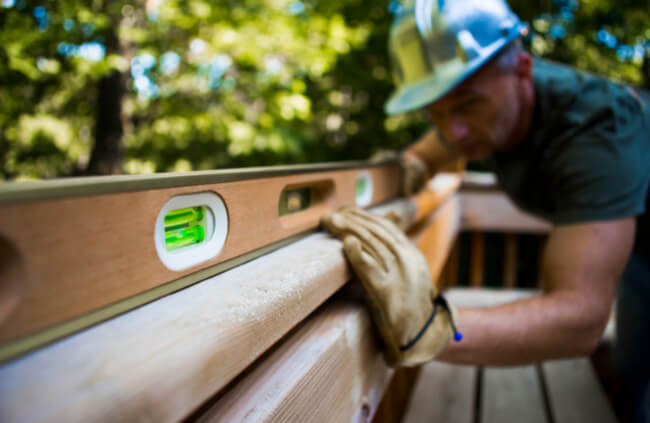
Once your garden has been prepared and now ready to start some landscape construction your next group of landscape tools will help you measure out the site.
Spirit Level
This is essential if you’re keen to have structures look straight and remain consistent. Spirit levels come in a range of sizes, but the basic principle consists of a metal bar inset with a fluid level.
In the fluid is a bubble and the inset is marked with two lines which the bubble should remain between demonstrating that whatever is being measured is level.
Set Square
Another essential tool for setting out is the set square. It allows you to keep a 90° angle between two surfaces.
Tape Measure
Try landscaping without one of these. They are an important tool for measuring lengths, widths, depths of your structures and your resources.
String Line
A string line will help you mark out where your structures need to be built. They keep a straight line between Point A and B and are required if laying bricks or paving. They can even be used for setting out and one great tip is to use them as a giant set square.
Over long distances a set square becomes inaccurate, so a rule-of-thumb is the 5-4-3 using a string line. It works by measuring one side to 4m, the adjacent to 3m and then the hypotenuse of that triangle should be 5m. If it is, then you know that you’re setting out is square.
Garden Hose
A length of garden hose is a great way to measure curved lines for ponds, paths and even garden beds. It holds its shape well and once you’re happy with the design you can outline the soil with some spray paint and remove the hose.
Chalk Line
Finally, the chalk line is just a glorified string line although it’s had chalk added to it. Once the line is straight and taut you flick it with your fingers and it produces a chalk line ready to cut, dig or do whatever you wish.
Ground Tools
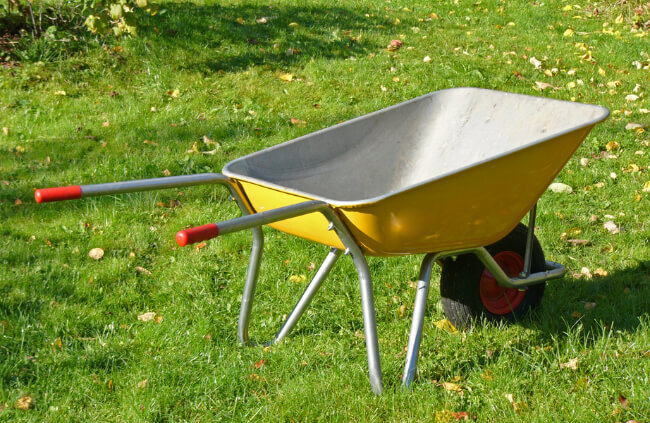
Now that all your set out work has been completed it’s time to start construction.
Wheelbarrow
The humble wheelbarrow is one of the most important landscape tools and is used for multiple tasks; carting rubbish and resources and mixing cement are its main uses. TIP: buy with a pneumatic tyre rather than a solid type and always keep the tyre pumped up with air. Or better yet, get a motorised wheelbarrow instead.
Shovel/Spade
For digging and shovelling soil, dirt, refuse etc.
Rake
A garden rake is one of the more important landscape tools as it helps to level surfaces and remove objects that could hinder your construction progress. Plus, depending what style garden you are creating can even be employed for some of the finishing work.
Leaf Blower
One of the few power tools needed for the home garden, a leaf blower makes light work of cleaning up and dispersing dust made from your cutting tools.
Stone and Brickwork Tools
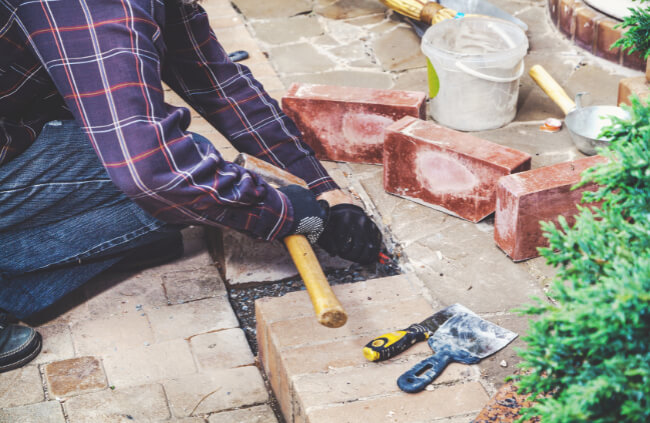
Mallet
The mallet is a great tool when completing stone or brick work. Shaped like a hammer but with a rubber head it gently eases bricks, rocks and paving into place without breaking them.
Trowel
When dealing with mortar, the trowel in its varying sizes, is a much-required landscape tool. It’s very similar in use to the garden trowel but with a triangular-pointed metal head is much easier to move and shape mortar.
Float
Floats can usually be sourced in either plastic or metal with the plastic variety unlikely to rust but often easier to wear away. A float is a great tool to smooth concrete and to help render brickwork.
Brick Chisel
A brick chisel, or bolster as some call it, is required when bricks or pavers need to be broken. Placed on the face of a brick and worked around a line constantly with a hammer, these tools are very helpful when you don’t have large quantities of cuts to be made.
Timber and Metal Tools
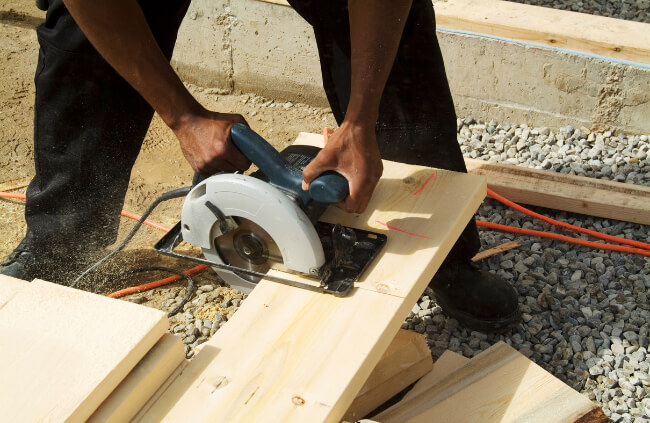
Circular Saw
Another power tool that’s essential in your arsenal if you have lots of timber to cut is the circular saw. Incredibly mobile, this tool is great for cutting lengths of wood quickly and in most cases does it quite accurately. Circular saws are also great for trimming wooden decks.
See our review of the best circular saws in Australia for 2023.
Hammer
Using nails, you need a hammer. Not very good at hitting nails – get a claw hammer.
Drill
Sometimes nails are just not the correct fastener for your timber, and you may require screws. This is when a drill becomes an important tool or when you need holes cut into your steel or timber.
Angle Grinder
In some ways the angle grinder is the counterpart to the circular saw but for metal. It’s great at cutting steel, aluminium, tin, or a variety of other metals. With differing types of blades, they can also be useful to cut bricks, tiles and any type of masonry.
And there you have it, 21 landscape tools that should help you get most of your jobs done around your home garden.
Published on June 5, 2023 by Gary Clarke
Last Updated on October 30, 2023




